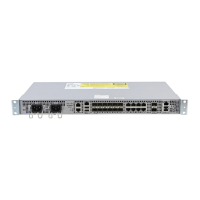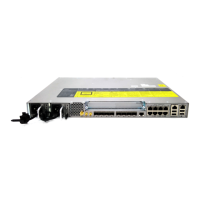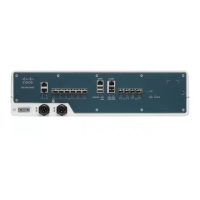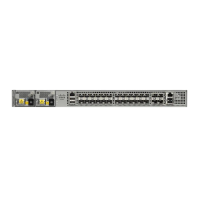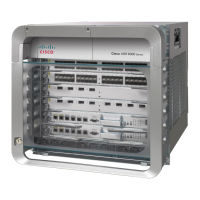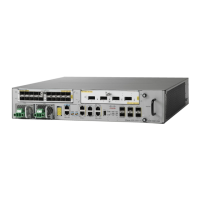CHAPTER 1
MPLS Traffic Engineering – Bundled Interface
Support
The MPLS Traffic Engineering - Bundled Interface Support feature enables Multiprotocol Label Switching
(MPLS) traffic engineering (TE) tunnels over the bundled interfaces—EtherChannel and Gigabit EtherChannel
(GEC).
The Resource Reservation Protocol (RSVP) notifies TE about bandwidth changes that occur when member
links are added or deleted, or when links become active or inactive. TE notifies other nodes in the network
via Interior Gateway Protocol (IGP) flooding. By default, the bandwidth available to TE Label-Switched
Paths (LSPs) is 75 percent of the interface bandwidth. You can change the percentage of the global bandwidth
available for TE LSPs by using an RSVP command on the bundled interface. Bandwidth reservation and
preemption are supported.
The Fast Reroute (FRR) feature is supported on bundled interfaces. FRR is activated when a bundled interface
goes down; for example, if you enter the shutdown command to shut down the interface or fewer than the
required minimum number of links are operational.
•
Finding Feature Information, page 1
• Prerequisites for MPLS TE – Bundled Interface Support, page 2
• Restrictions for MPLS TE – Bundled Interface Support, page 2
• Information About MPLS TE – Bundled Interface Support, page 2
• How to Configure MPLS TE – Bundled Interface Support, page 4
•
Configuration Examples for MPLS TE Bundled Interface Support, page 5
•
Additional References for MPLS TE - Bundled Interface Support, page 8
• Feature Information for MPLS Traffic Engineering—Bundled Interface Support, page 8
•
Glossary, page 9
Finding Feature Information
Your software release may not support all the features documented in this module. For the latest caveats and
feature information, see Bug Search Tool and the release notes for your platform and software release. To
MPLS Traffic Engineering Path Calculation and Setup Configuration Guide, Cisco IOS XE Release 3S (Cisco ASR
920 Series)
1

